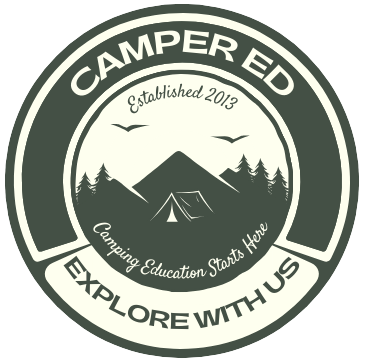Most seasoned adventurers understand the importance of being able to navigate their way through the great outdoors with just a map and compass. In this guide, we will break down the basic skills needed to navigate like a pro during your family camping trips. Whether you’re a beginner or looking to brush up on your skills, mastering the art of navigation will enhance your camping experience and ensure you find your way back to camp with confidence.
Choosing the Right Map and Compass
Selecting a Topographic Map
One imperative item to have for your camping adventures is a topographic map. These maps provide detailed information about the terrain, including elevation changes, landmarks, and water sources. Look for maps that cover the specific area you will be exploring and ensure they are up to date.
Understanding Compass Types and Features
To navigate accurately, you’ll need a reliable compass. There are different types of compasses available, each with its unique features. Understanding the differences between baseplate, lensatic, and orienteering compasses can help you choose the right one for your needs. Perceiving the various components such as the needle, housing, and bezel will also aid in using the compass effectively.
| Compass Type | Key Features |
|---|---|
| Baseplate Compass | Transparent baseplate with ruler markings |
| Lensatic Compass | Thumb loop for stability and sighting lens for precise readings |
| Orienteering Compass | Adjustable declination for easy map alignment |
| Needle | Magnetized pointer indicating magnetic north |
| Housing | Capsule containing the needle for stability |
Basic Map Reading Skills
Orienting Your Map
Even with modern technology, having basic map reading skills is important for any outdoor adventure. Before setting off on a hike or camping trip, it’s important to orient your map so that it aligns with the terrain around you. This ensures that you can accurately follow your route and identify landmarks along the way.
Identifying Landmarks and Features
Basic map reading skills also involve identifying landmarks and features on the map. By being able to recognize prominent landmarks such as rivers, mountains, or trails, you can better navigate your journey and stay on course. This skill is invaluable for planning your route and staying oriented in unfamiliar terrain.
Using Your Compass in the Field
Taking Bearings and Following Directions
Any adventurer must know how to take bearings and follow directions with a compass. To do so, simply aim the compass needle at your desired landmark, rotate the bezel until north aligns with the indicator arrow, and read the bearing. Follow this direction to reach your destination with precision.
Triangulating Your Position
Using the technique of triangulation, you can pinpoint your exact position on a map by taking bearings from two known landmarks. By drawing lines on the map corresponding to these bearings, your exact location will be where the lines intersect.
Your ability to triangulate your position can be a valuable skill in navigating the wilderness, especially when landmarks are prominent and easily identifiable. By taking multiple bearings, you can confidently determine your position on the map and stay on course during your family camping adventures.
Putting it All Together – Navigation in Practice
Creating a Route Plan
Now, with your map and compass skills honed, it’s time to create a route plan for your family camping adventure. Start by identifying key landmarks, trails, and potential obstacles along your intended path. Consider the terrain, distance, and estimated time of travel to map out a realistic schedule for your journey.
Staying on Course and Dealing with Errors
Plan for unforeseen circumstances by regularly checking your map and compass to ensure you’re on the right track. If you do veer off course, don’t panic. Stop, assess the situation, reorient yourself, and make corrections to get back on route. Familiarize yourself with techniques like backtracking and triangulation to navigate your way back to the intended course.
Another important aspect of staying on course is paying attention to subtle clues in the environment, such as the direction of sunlight, wind patterns, and natural landmarks. These cues can help you stay oriented and make informed decisions when facing unexpected detours or errors along the way. Keep in mind, practice makes perfect, so don’t be afraid to test your navigation skills in various terrains and conditions to build confidence for future camping expeditions.
Final Words
Taking this into account, mastering basic map and compass skills can significantly enhance your family camping adventures. With the right knowledge and practice, you can navigate through the wilderness like a pro, ensuring a safe and enjoyable experience for everyone. So grab your map, compass, and sense of adventure, and head out to explore the great outdoors with confidence!
